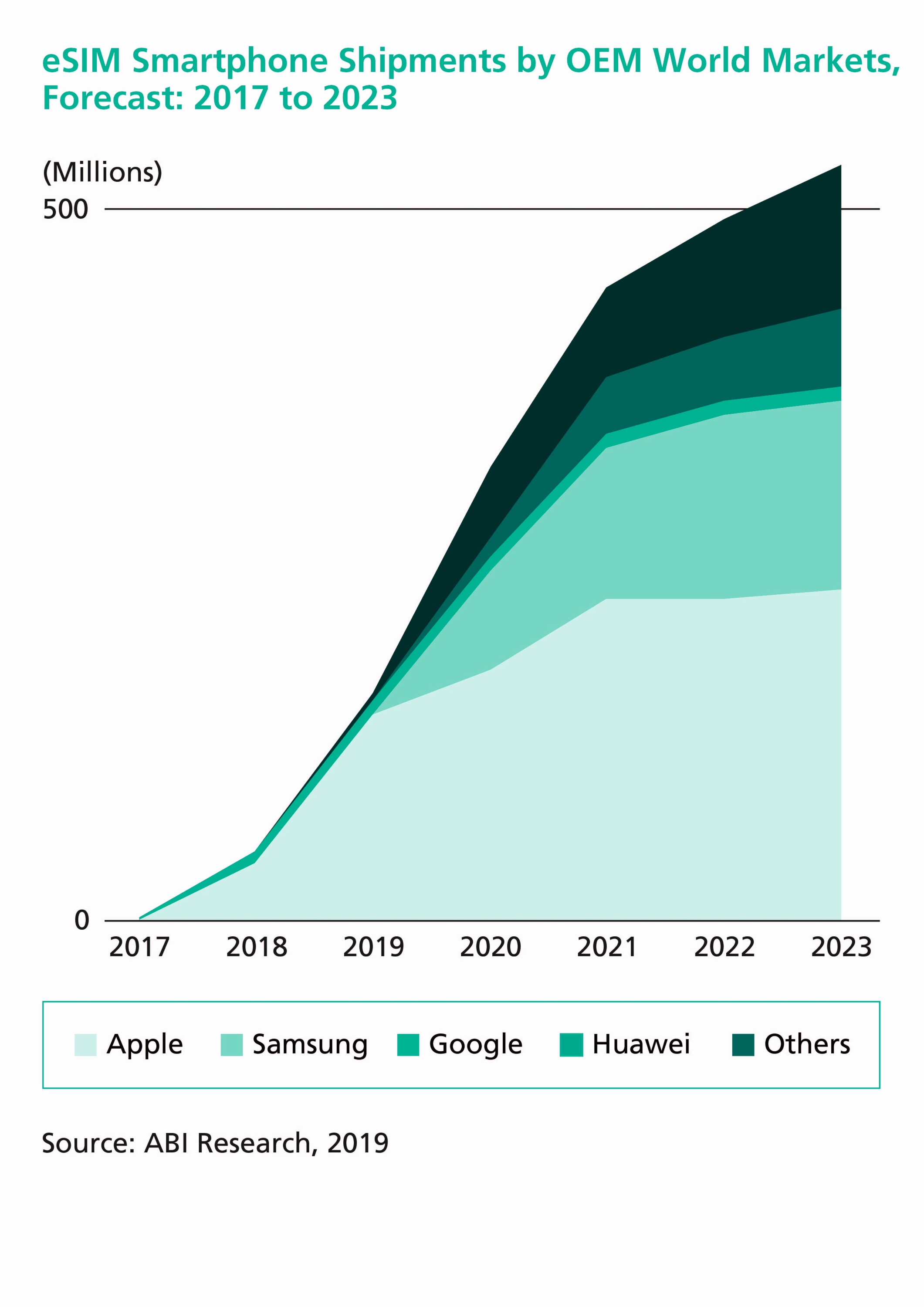eSIM technology promises numerous advantages to the users of smartphones and other connected devices. Many devices now shipping all around the world are equipped with a permanently installed SIM chip on which users can easily download their network operator profiles “over the air”. The activation and management of mobile phone contracts will also become much easier for both users and network operators.
When entering a new contract, customers no longer have to order and insert physical SIM cards into their phones. If you are travelling abroad, you can also activate a local/second mobile network provider for voice and data services in just a few minutes.
eSIM technology, which has been used successfully in industrial machine-to-machine communication (often considered Internet of Things) for many years and continues to grow dramatically, is therefore set to conquer the consumer mass market. G+D Mobile Security lists below five clear signs that eSIM is on the verge of a broad breakthrough.
1. Apple relies on eSIM. At the launch of its new iPhones, Apple announced that all three new iPhones support eSIM functionality; eSIM was already supported in the Apple watch and Apple iPad offerings. This announcement has encouraged the advancement of integration of eSIM into other vendors’ devices. As a result, industry analysts’ forecasts for the eSIM market (within consumer devices) for the year 2019 were increased almost tenfold.
2. Other leading manufacturers are active. Many other players are also actively driving the use of eSIM technology. Large and innovative manufacturers like Samsung have already implemented eSIM technology in several product generations of their smartwatches, and Google, as another example, uses the advantages of this technology in its Google Fi service. Leading Chinese and Japanese manufacturers are also already testing and preparing for the technology. The first eSIM-only phone has been available in Japan for several months.
3. Further device types will follow. In addition to smartphones and smartwatches, manufacturers are increasingly equipping tablets and notebooks with eSIM functionality. It provides these devices with a permanent internet connection, which is increasingly a matter of course for mobile employees and an expectation of the millennial generation. Hence, “always connected” is becoming increasingly obligatory for companies.
4. Network operators are “eSIM ready”. The network operator community is prepared for the broad use of eSIM. Major mobile communications providers worldwide already offer management services for eSIM and are continuously expanding them. eSIM as an emerging topic is also of strategic importance for smaller mobile communications providers who are racing to catch up.
5. Global standard is ready. A GSMA specification now provides a global standard for remote SIM provisioning (RSP) of consumer devices. This means that all providers in the ecosystem of the mobile industry, be they operators or device vendors, can embrace a framework that enables users worldwide to manage the eSIMs in their mobile devices.
“eSIM technology has reached the mass market – even earlier than expected,” explains Carsten Ahrens, CEO of G+D Mobile Security. “The essential thing is to maintain, if not increase, the core foundation of security throughout. Our eSIM solutions combine the highest security levels of the traditional physical SIM card with significantly improved usability.”



















































































































